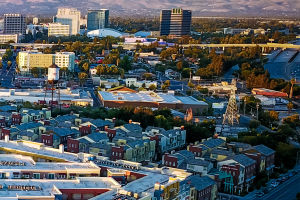Plateau pastures are an important resource for animal husbandry, and they represent a harmonious coexistence between humans and nature. The ecosystem characteristics of plateau pastures are unique, and they have both ecological and cultural values.
Ecological Value of Plateau Pastures
The ecosystem of plateau pastures has adapted to the harsh environment of high mountain areas, which is characterized by a cold climate, little precipitation, barren soil, and sparse vegetation.
The pastoral animals, such as yaks, sheep, and goats, have evolved to adapt to this environment and become key species in the plateau pasture ecosystem.
These animals have a significant impact on the grassland ecosystem by feeding, excreting, and disturbing the soil surface. Their actions maintain the balance of the grassland, which is crucial to the survival of the ecosystem.
Moreover, the plateau grassland is an important carbon sink, and the organic matter in the soil and herbaceous plants can absorb a large amount of carbon dioxide. This makes the plateau pasture a significant carbon sink, helping to mitigate the negative effects of climate change.
Furthermore, the grasslands of plateau pastures are also an essential water source. The ice, snow, rainwater, and meltwater in the plateau grassland provide vital water resources for downstream areas. The preservation of this ecosystem is critical for ensuring the sustainable development of the region.
Cultural Value of Plateau Pastures
Plateau pastures also have significant cultural value. The coexistence of humans, animals, and nature on the plateau pastures has formed a unique animal husbandry culture and national culture.
The herdsmen of different nationalities maintain their own unique lifestyles and cultural traditions. For example, in the highlands of the Alps, people rely on dairy animals such as cows and goats to survive and produce high-quality cheese and butter. This has led to the formation of a unique cheese culture and butter culture.
In addition, the unique costumes, customs, folk music, and dances of the herdsmen of different nationalities on the plateau pastures reflect the rich cultural diversity of the region.
Protection and Sustainable Development of Plateau Pastures
The ecological environment of plateau pastures is facing serious threats such as overgrazing, over-cultivation, and pollution. To protect the ecosystem and cultural traditions of plateau pastures, a series of measures need to be taken.
Firstly, the amount of grazing should be limited, and measures such as rotational grazing and regional grazing should be implemented to restore the balance of the ecosystem. Secondly, environmental protection and pollution prevention and control measures should be strengthened to ensure the ecological security of plateau pastures.
Finally, the sustainable development of plateau pastures is also critical. On the basis of protecting the ecological environment, it is necessary to promote the modernization and large-scale development of plateau animal husbandry and improve the production efficiency and quality level of animal husbandry.
Conclusion
Plateau pastures are a treasure of ecological and cultural value. The unique ecosystem characteristics of plateau pastures make them crucial carbon sinks and water sources.
The coexistence of humans, animals, and nature on the plateau pastures has formed a unique animal husbandry culture and national culture, reflecting the rich cultural diversity of the region.


